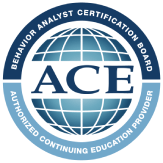The core basics of ABA therapy are the same whether done at home or in a center, but there are important differences. This is what makes answering the “ABA therapy in-home vs. center-based” question so difficult when parents want us to tell them which to choose.
Below, we’ll dive into the differences between these forms of ABA therapy so you have the information you need to make an informed decision.
Recommended: What Is ABA Therapy? Understanding Applied Behavior Analysis
A Basic Explanation of In-Home ABA Therapy
When an ABA provider comes to your home for sessions, that’s called in-home ABA therapy. The home environment is important because it’s the one your child feels most comfortable in.
ABA sessions will be held in a specific area in your home. The ABA team should work around your current furniture arrangement to minimize disruption to your daily life. The ABA sessions will be 1:1 between the team and the client.
A Basic Explanation of Center-Based ABA Therapy
Center-based ABA therapy takes place at an ABA therapy center. The center is specifically designed to host sessions for multiple clients and includes specialty equipment. Together, the team and your child will work to achieve the client’s goals.
In-Home ABA vs. Center-Based
Neither in-home nor center-based ABA therapy is better than the other. What is best for your child will depend on their unique needs. However, there are important differences, highlighted below.
| Element | In-Home ABA | Center-Based ABA |
| Environment | A comfortable and familiar environment for children. The familiarity often makes children more open to having ABA sessions. | A clinical or “school-like” environment, which can help children mentally prepare themselves for ABA. |
| Socialization | Most sessions are 1:1 or with family members, limiting socialization. Some in-home services will offer outside socialization activities. | Naturally more sociable, since more people are working within the center. Setting up social activities is easier for this reason as well. |
| Convenience for families | Families don’t have to do any traveling because the ABA team comes to them. However, it does require giving up house space for the sessions. | Parents will have to drive to a center. However, it can provide parents a safe space to leave their child for a few hours (if that’s allowed). |
| Insurance | Most insurances will cover in-home therapy. You’ll have to contact your company to learn the specific coverage. | Most insurances will cover center-based therapy. You’ll have to contact your company to learn the specific coverage. |
| Family involvement | Fully encourages and often requires family involvement by being done at home. ABA teams often work with the client and their family simultaneously. | Family involvement is encouraged and often required, but is limited to when family members can come to the center. |
| Flexibility | In-home ABA will work with a family’s personal schedule. | Families are restricted to the center’s schedule. |
| Transition support | At-home ABA providers can focus on delivering transitional support. | Naturally helps build a tolerance to change by having a child come and go to the center. |
| Addressing daily living tasks | Daily living tasks are practiced in a child’s natural environment, which makes it easier for the child to connect the task to their daily routine. | Centers often have sinks, dining tables, and dressers set up for practice. However, these are still in the clinic environment of the center. |
| Better suited for | Young children or children with severe symptoms may find more benefit from in-home ABA due to the familiar environment. | Children who need assistance with socialization or school prep can reap more benefits from a center. |
| Distractions | There can be many distractions at home, such as family members, pets, toys, etc. | There are fewer distractions in a clinic setting, though other clients can be a distraction. |
Best Practices for Maximizing Outcomes Regardless of Setting
No matter if you choose at-home or center-based ABA therapy, your involvement is crucial to enhancing your child’s experience. Here’s what you can do as a parent to enrich the ABA process.
-
- Always communicate: Whether it’s with family members or the ABA team, ensure that those around you understand what ABA therapy is and what is needed for your child. Ask those around you to help you make each ABA session a success.
-
- Create routines: As you start ABA therapy, establish routines for your child. This includes having start and end times for therapy, scheduled breaks, and clear lines between “work” and play. You can create a visual schedule for your child that they can look at and follow. Others in your household should know and respect these routines as well.
-
- Listen to the ABA team: Your child’s ABA therapist has a wealth of knowledge and suggestions to ensure ABA therapy is a success. Discuss what reinforcers will work best for your child, how to handle potential triggers at home, and what changes need to be made in your daily life.
-
- Prepare your child to meet their therapist: Describe what ABA team is and who their therapist is going to be. If you can, show the therapist’s picture as you explain that the therapist wants to help them. This will make their first meeting less intimidating.
-
- Be adaptable: As your child starts this process, various lifestyle factors may change depending on their needs. You need to be open to changing things such as where ABA takes place, how often ABA occurs, how bright the lights are, etc.
-
- Make clear goals: While the ABA therapist is knowledgeable, you know your child best. You know what your child needs, and your goals and expectations should reflect that. You should ensure that your ABA therapist knows what the goals are as well.
-
- Apply ABA strategies in between sessions: It’s important to maintain what your child has learned in between sessions. You can do this by applying different ABA techniques while interacting with your child. The ABA therapist will teach you how to do this.
FAQ: Key Questions Parents Ask About ABA Settings
Here is some additional information about the in-home vs. in-center ABA therapy discussion and how the different settings may affect your child.
Can my child switch settings later (from home to center or vice versa)?
Yes, your child can switch ABA therapy settings later in their journey. It’s not uncommon for some children to go from at-home to center-based to help prepare for school. Some people utilize both home and center ABA at the same time.
Will insurance cover both in-home and center-based ABA equally?
Whether insurance covers both in-home and center-based ABA equally will depend on your insurance. It is safe to say that most insurances do have some form of coverage for both.
Does one setting lead to faster progress?
No, one ABA setting doesn’t necessarily lead to faster progress than another. However, choosing the right environment for your child’s specific needs can make for a smoother introduction process.
What happens if a child resists a new environment (center/home)?
If your child resists a new environment, your ABA therapist will pause and assess the situation. They may implement different techniques to calm your child. Depending on how distressed your child is, they may suggest waiting until tomorrow to start ABA and treating this session as a meet-and-greet.
Choose What’s Best for Your Child
You’ve already taken an extraordinary step towards improving your child’s quality of life by trying ABA therapy. Whether you choose to do in-home or center-based therapy should solely depend on what’s best for your child’s specific needs.
It may be best to find an ABA provider that offers both types, like Spectrum Behavioral Therapies. When we do our assessment, we make suggestions on which environment we think your child would work best in.









